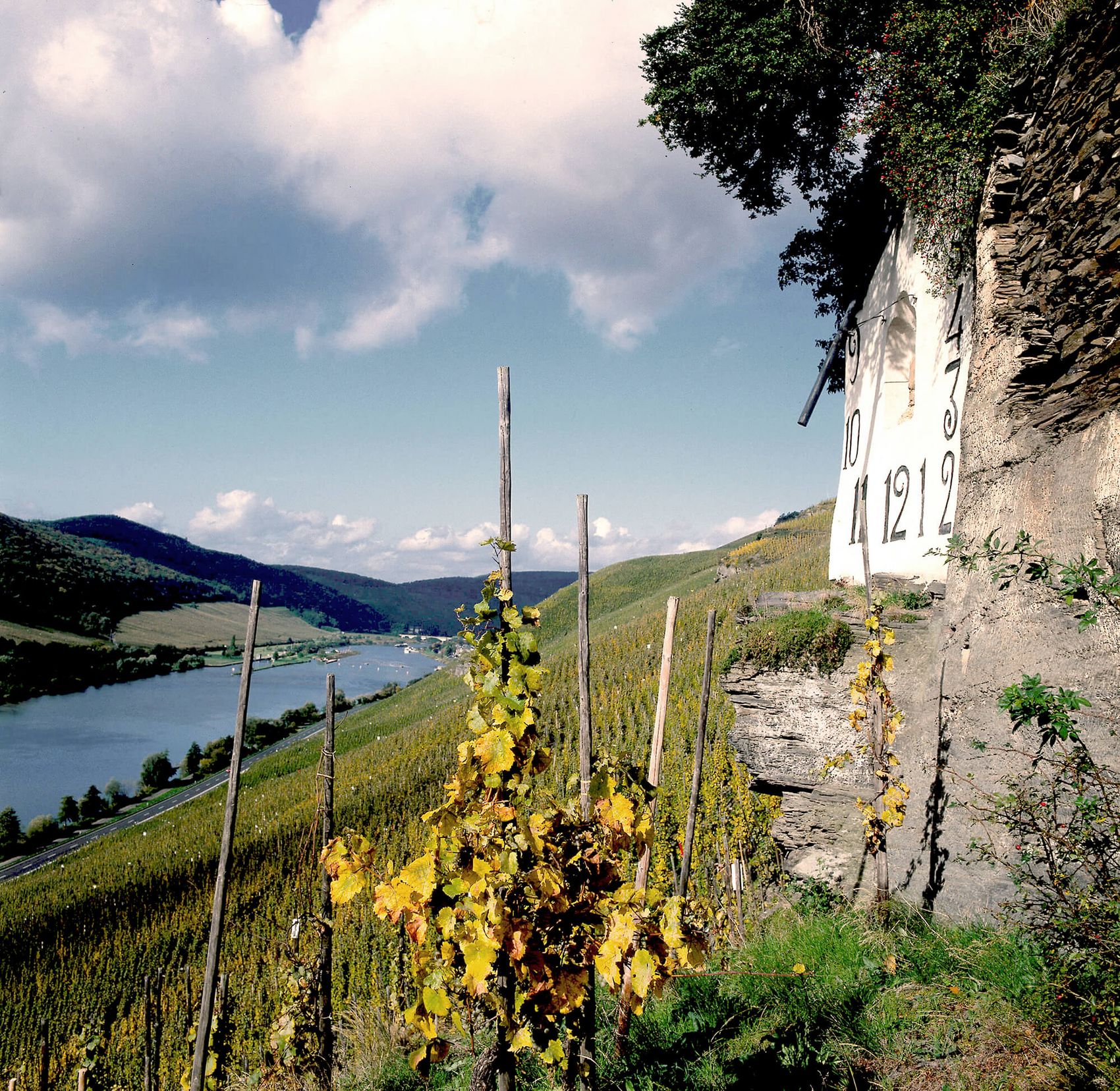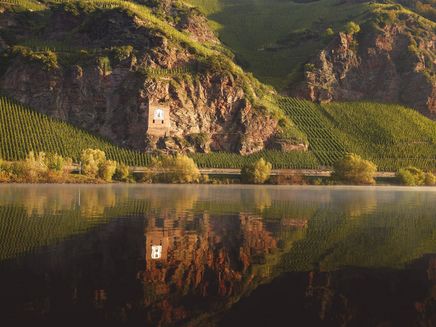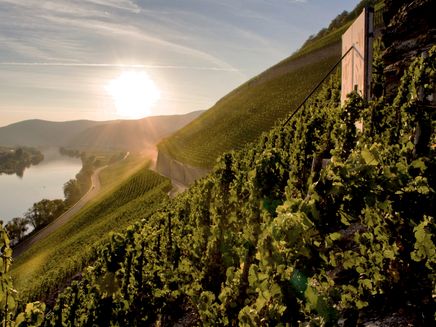There are a number of large sundials adorning picturesque old walls and rocks on the steep slopes of the Mosel Valley. They are pure nostalgia, and leave no doubt that particularly fine grapes ripen in the sun here. Several vineyards are even named after them, such as the “Wehlener Sonnenuhr” (Sonnenuhr: sundial), the “Zeltinger Sonnenuhr” and the “Brauneberger Juffer Sonnenuhr”. It all makes a convincing argument for trying the wines that are made there.
As you sit in the sun with a long-stemmed wine glass in your hand and close your eyes, you might imagine the following; hard working winegrowers in blue tunics and pretty winegrowers’ wives in traditional “Moselblümchen” folk costume dresses tending the vines, singing together and glancing at the sundial time and again to make sure they don’t miss their lunch break or the end of their working day. But hold on a minute, you can now hear the bells from the nearest church tower down in the valley ring twelve o’clock. Perhaps your scene is a little too good to be true? Even in the past, sundials served more as beautiful ornaments in the vineyards; they couldn’t be seen from every vineyard and they weren’t absolutely necessary for orientation. Plus working on these steep slopes was never that carefree.
So the vineyard sundials probably have more to do with the Mosel people’s love for their regional drink than with pure necessity. Local historian Uwe Praus believes that a book from 1841 may have inspired this sundial euphoria, namely “Praktische Sonnenuhren-Kunst für Jedermann” (Practical Sundial Design for Everyone) by the Bavarian imperial surveyor Joseph Ferchel. The Zeltingen and Wehlen sundials were in any case built a year after its publication, and the Ürziger sundial is not yet in evidence on a copper engraving from 1833.
Measuring time by the position of the sun is, of course, an age-old method, and the ancient Goloring henge near Kobern-Gondorf may also have been a form of sundial. If not, our oldest example definitely dates back to Roman times and was discovered at the Archaeological Park Martberg near Pommern. The preserved fragment reveals that the ancient sundial was shaped as a hollow half-sphere, i.e. quite different from our existing vineyard dials.
But do the sundials actually work properly? A good question! Naturally, the older ones can’t be adjusted to summer and winter time that easily. But some of them are also half an hour “behind”, which is interesting. These dials were built before the introduction of Central European Time (CET) in 1893. All those built later (or readjusted) show modern time. The half-hour difference results from the fact that the sun can’t be at its highest at the same time in all places that lie in our time zone; the Earth rotates, after all. So it was necessary to define one of the sun’s highest points as binding for 12 o’clock, and it wasn’t one from the Mosel region. It’s a shame as the sun is definitely at its best here!


